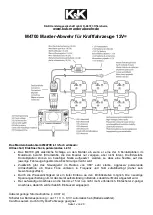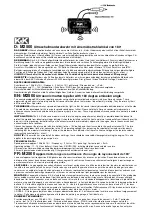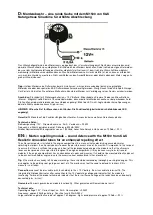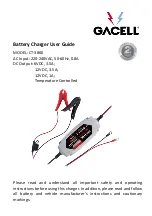
If this issue has occurred multiple times at your normal charging location, contact an electrician to inspect the
electrical installation. They should check the following:
• Any installed charging equipment and its connection to the building wiring.
• The building wiring, including any wall outlet used with a Mobile Connector.
• The electrical connection to the power utility line where it enters the building.
Discuss with the electrician whether the charge current on the vehicle should be lowered, or if the installation should
be upgraded to support a higher charge current.
As this alert is usually specific to external charging equipment and power sources, and it does not typically indicate
an issue with your vehicle that can be resolved by scheduling service, it is recommended that you:
• Try charging with multiple, different types of charging equipment at different locations.
• Contact an electrician to inspect the wiring and equipment at your normal charging location.
You can also try charging your vehicle using a Tesla Supercharger or Destination Charging location, all of which can
be located through the map on your vehicle's touchscreen display. See
Maps and Navigation on page 131
for more
details. Additional third-party charging stations may also be available in your area to help you to pinpoint the issue.
For more information on troubleshooting Mobile Connector or Wall Connector status lights, refer to the product's
Owner's Manual at
Charging & Adapter Product Guides
. If using other external charging equipment, refer to the
manufacturer's provided documentation for troubleshooting tips.
(PCS_a073)
External charging equipment error detected
Try different charging equipment
AC charging cannot begin due to a condition that prevents your vehicle from charging with AC power. DC fast
charging / Supercharging should still function as expected.
Your vehicle's onboard charger is detecting input voltage at the charge port when no power has been requested
from the external charging equipment, which indicates the external charging equipment is not functioning as
expected.
This can sometimes be caused by a hardware issue specific to the external charging equipment, which prevents the
charging equipment from switching power to the vehicle on or off when requested. It could also occur due to
another condition affecting the external charging equipment, or a condition affecting your vehicle itself.
As this alert is usually specific to external charging equipment, and it does not typically indicate an issue with your
vehicle that can be resolved by scheduling service, it is recommended that you try charging with multiple, different
types of charging equipment.
You can also try charging your vehicle using a Tesla Supercharger or Destination Charging location, all of which can
be located through the map on your vehicle's touchscreen display. See
Maps and Navigation on page 131
for more
details. Additional third-party charging stations may also be available in your area to help you to pinpoint the issue.
For more information on troubleshooting Mobile Connector or Wall Connector status lights, refer to the product's
Owner's Manual at
Charging & Adapter Product Guides
. If using other external charging equipment, refer to the
manufacturer's provided documentation for troubleshooting tips.
(PCS_a090)
Charging slowed - Some AC phases not powered
Check power source and charging equipment
Charging speed has been reduced due to a condition that affects your vehicle’s ability to charge with AC power. DC
fast charging / Supercharging should still function as expected.
Troubleshooting Alerts
244
MODEL S Owner's Manual
















































